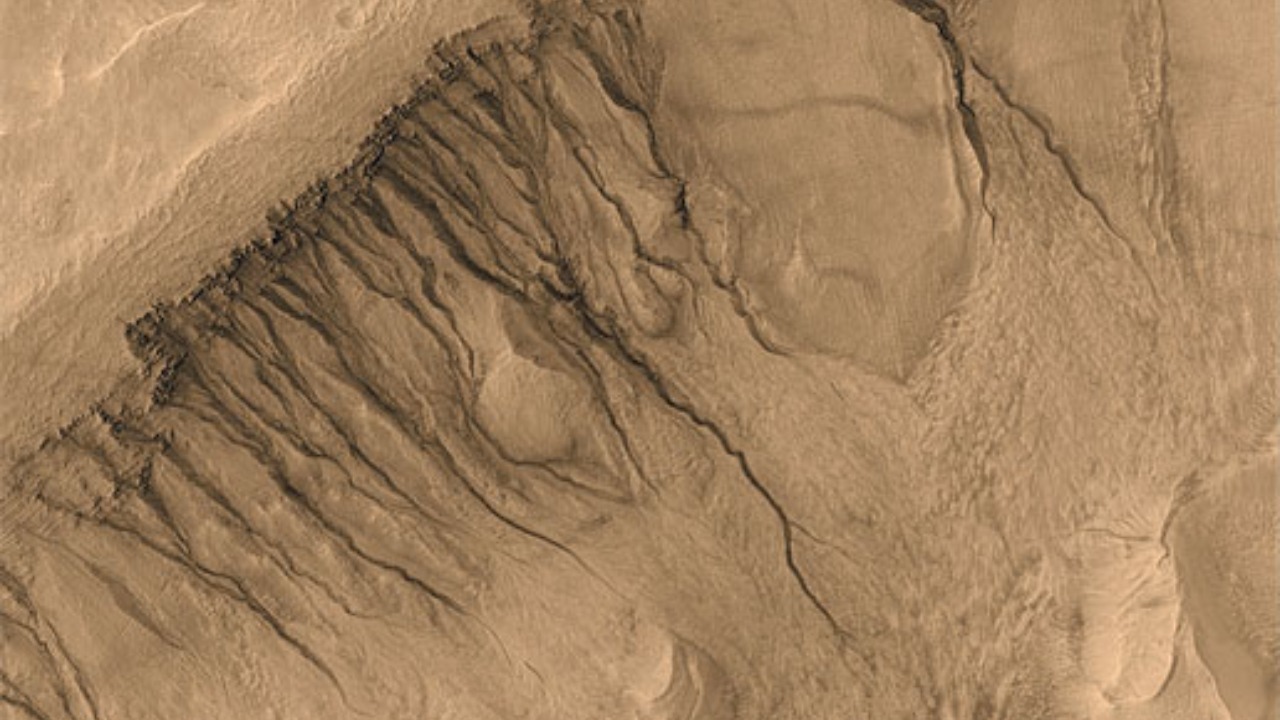
For half a century, the enigmatic black streaks on Mars have puzzled scientists. Now, thanks to advanced AI analysis, we finally have an explanation for these intriguing features, known as recurring slope lineae (RSL). This breakthrough reveals that a significant portion of these streaks form through dry processes, challenging long-held assumptions about Martian hydrology and opening new insights into the planet’s surface dynamics and geological history.
The Enigma of Mars’ Black Streaks
First spotted by early Mars orbiters in the 1970s, these dark, linear features appear seasonally on Martian slopes. Estimated to number around 2 million, they are concentrated in mid-latitude craters and hillsides across various regions of the planet. These RSL can extend up to hundreds of meters long, darkening the Martian surface and sparking decades of scientific debate.
A 50-Year Pursuit of Answers
The quest to understand these Martian streaks began with the Viking missions in the 1970s, which first imaged these features, initiating a 50-year mystery. Subsequent missions, such as the Mars Reconnaissance Orbiter in the 2000s, confirmed the dynamic nature of the streaks but failed to provide direct evidence of water flows. The global scientific community’s involvement, including spectrographic analyses that failed to detect hydrated salts, only deepened the Martian mystery.
Early Theories and Water-Based Hypotheses
In the 2010s, the dominant theory proposed that the streaks were caused by briny water flows, based on spectral hints of perchlorates. Alternative ideas, such as dust avalanches or gas eruptions, were also considered and tested through lab simulations, but lacked conclusive field matches. The potential involvement of water excited scientists due to its implications for habitability, driving missions like Phoenix and Curiosity to search for moisture signatures on Mars.
The Role of AI in Unraveling the Puzzle
It was the power of AI that finally cracked the Mars mystery. By analyzing vast datasets from orbital imagery, AI was able to process patterns beyond human capability. Machine learning models were trained on half a million streaks to identify correlations with slope angles and seasonal changes. The efficiency of AI in ruling out water involvement was demonstrated by simulating dry granular flows that matched observed streak formations.
The Dry Explanation: No Water Required
The core finding is that these Martian streaks form via dry avalanches without a drop of water, triggered by thermal expansion and CO2 frost sublimation. AI models showed the streaks as mobilized dark sand on steep slopes, consistent with the low-pressure conditions on Mars. This explanation aligns with the absence of water vapor detections in recent atmospheric data, effectively solving the 50-year mystery.
Implications for Mars Exploration
The dry origin of these streaks reframes our understanding of Mars’ past climate, reducing evidence for recent liquid water and impacting astrobiology searches. Future rovers could target streak sites for soil sampling to confirm granular flow compositions. Beyond Mars, this breakthrough underscores the potential of AI in analyzing features on other worlds, such as Europa or Titan, opening new frontiers in planetary science.
More from MorningOverview